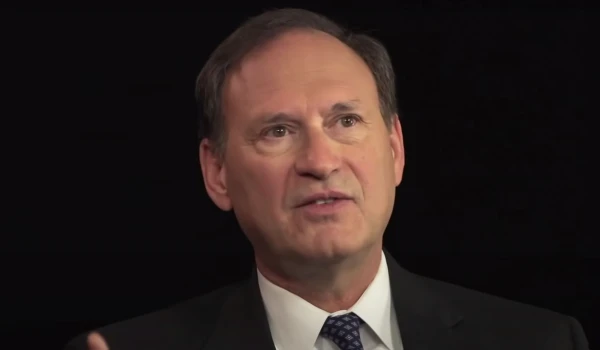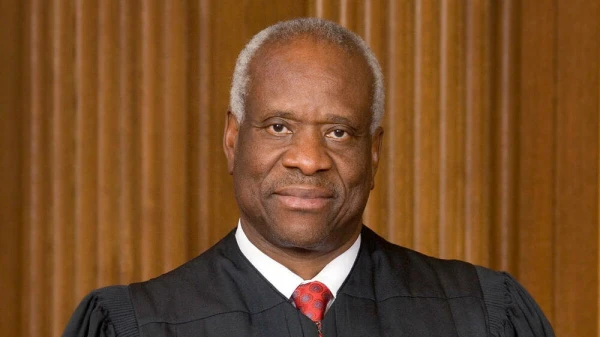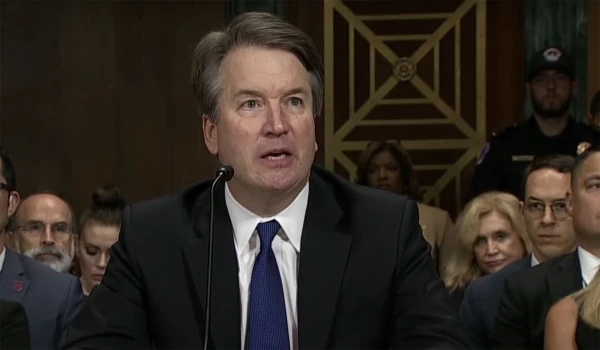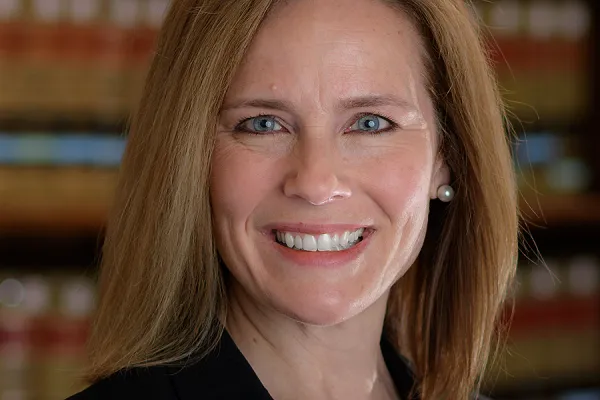Denver Newsroom, Jun 24, 2022 / 09:15 am
The U.S. Supreme Court has overturned Roe v. Wade with its landmark Dobbs v. Jackson Women’s Health decision, issued Friday.
For the first time in almost 50 years, the debate over legal abortion returns to the individual U.S. states, allowing many states to protect the lives of the unborn.
Such protection efforts will still face strong opposition from foes who say individual autonomy should trump the right to life, and Congressional Democrats have pushed for federal legislation they say would “codify” Roe.
Though the Dobbs decision falls short of nationwide protections for the unborn, it nonetheless represents a major victory for the decades of pro-life efforts to cultivate and promote jurists capable of rejecting Roe’s deeply troubling precedent and allowing the country to chart a different path.
The majority opinion, authored by Justice Samuel Alito, was joined by Justices Clarence Thomas, Neil Gorsuch, Brett Kavanaugh, and Amy Coney Barrett. Thomas and Kavanaugh also filed concurring opinions.
Chief Justice John Roberts filed an opinion concurring in the judgement, in which he advocated for a more narrow ruling.
"The Court’s decision to overrule Roe and Casey is a serious jolt to the legal system—regardless of how you view those cases," his opinion reads. "A narrower decision rejecting the misguided viability line would be markedly less unsettling, and nothing more is needed to decide this case."
"My point is that Roe adopted two distinct rules of constitutional law: one, that a woman has the right to choose to terminate a pregnancy; two, that such right may be overridden by the State’s legitimate interests when the fetus is viable outside the womb," he added at another point. "The latter is obviously distinct from the former. I would abandon that timing rule, but see no need in this case to consider the basic right."
Here are the justices who voted to end Roe v. Wade.
Associate Justice Samuel J. Alito Jr.
Alito is the author of the Dobbs decision. Now 72, he was nominated to the Supreme Court by President George W. Bush, where he has served since January 2006. He replaced Reagan nominee Justice Sandra Day O’Connor upon her retirement.
Alito outlined his philosophy in a January 2006 hearing before the Senate Judiciary Committee.
“A judge can’t have any agenda. A judge can’t have any preferred outcome in any particular case. And a judge certainly doesn’t have a client,” he said. “The judge’s only obligation — and it’s a solemn obligation — is to the rule of law, and what that means is that in every single case, the judge has to do what the law requires.”
Alito added that “there is nothing that is more important for our Republic than the rule of law. No person in this country, no matter how high or powerful, is above the law, and no person in this country is beneath the law.”

The justice’s other work has at times addressed religious and moral issues. Alito wrote the majority opinion in the 2014 Burwell v. Hobby Lobby case, which rebuked the Obama administration’s mandate that companies and others provide contraceptive coverage, including drugs that can cause abortions, in employee health plans. The mandate through the Department of Health and Human Services was particularly burdensome to Catholic organizations which reject contraception and abortifacients as unethical.
(Story continues below)
Alito also wrote a notable dissent from the majority opinion in the 2015 Obergefell v. Hodges case, in which the Supreme Court held that the Constitution guarantees the right to same-sex marriage.
He is a practicing Catholic from a first-generation Italian-American family in Trenton, New Jersey. He is a graduate of Yale Law School and was an officer in the U.S. Army Reserve from 1972 to 1980.
Alito gave the keynote address to the 2017 graduating class of St. Charles Borromeo Seminary in Philadelphia and received an honorary doctorate from the seminary, presented by Philadelphia’s then-Archbishop Charles Chaput.
In his remarks to the seminarians, he emphasized the importance of religious freedom and anticipated more struggles to come in the face of political and cultural dangers. He also said his faith provides him meaning and purpose in life.
Alito’s nomination gave the Supreme Court its first Catholic majority. At the time of his nomination Eleanor Smeal, then-president of the group Feminist Majority, whose causes include legal abortion, noted this fact and voiced concern that the court majority “would underrepresent other religions, not to mention nonbelievers.” Smeal’s statement drew criticism from some Catholics.
Associate Justice Clarence Thomas
In 1991, Thomas was nominated by President George H. W. Bush to fill the vacancy left by the death of Justice Thurgood Marshall, the first Black Supreme Court justice and a President Kennedy appointee who retired due to declining health.
Thomas, a Black man who grew up in segregated Georgia, has often had to reflect on the effects of race and racism in his life and in American history.
In a 2007 Supreme Court decision that ruled that race cannot be a factor in assigning children to public schools, rejecting a policy implemented to advance racial diversity, Thomas cited Justice John Marshall Harlan. In 1896 Harlan dissented from a pro-racial segregation ruling with the words: “Our Constitution is colorblind, and neither knows nor tolerates classes among citizens.”
Before Thomas became a federal judge, he served in various public and private roles and was chairman of the U.S. Equal Employment Opportunity Commission. He was a Catholic seminarian at Conception Seminary in Conception, Missouri. He was one of the first African-Americans to graduate from the College of the Holy Cross in Worcester, Massachusetts, where he later served as a trustee.
Allegations of sexual harassment, which Thomas strongly denied, made his 1991 confirmation hearings a major flashpoint of contention. His critics also opposed his judicial philosophy and worried how he might decide on various cases, including any reconsideration of Roe v. Wade.
Thomas has explicitly lamented abortion as a “tool of modern-day eugenics” that the court must eventually address. He made this argument in a 2019 solo opinion in the case Box v. Planned Parenthood, which concerned an Indiana ban on abortion based on race, sex, or disability of the unborn child.
In his view, the foundation for legal abortion was built in the birth-control movement of the early 20th century, which developed alongside the eugenics movement. Eugenics claimed to advance the scientific improvement of the human population either through fostering births of “superior” humans or by preventing the births of “inferior” people, sometimes through coercive means including forced sterilization.
Thomas charged that Planned Parenthood founder Margaret Sanger promoted birth control, though not abortion, “as a means of reducing the ‘ever increasing, unceasingly spawning class of human beings who never should have been born at all,” Thomas said, citing Sanger’s own words. Later abortion advocates, including Sanger collaborator Allan Guttmacher, “explicitly endorsed eugenic reasons for abortion,” the justice wrote.
Thomas lamented that previous Supreme Court decisions gave legitimacy and power to the eugenics movement and its coercive aspects. Prenatal screenings and other technologies, he warned, mean that “abortion can easily be used to eliminate children with unwanted characteristics” and he questioned why the right to a legal abortion should protect this.
At that time, Thomas agreed with the Supreme Court’s decision not to revisit lower courts’ injunction against the Indiana abortion regulation, pending further developments.
“Although the Court declines to wade into these issues today, we cannot avoid them forever,” said Thomas, who added, “the Constitution itself is silent on abortion.”

Thomas was born near Savannah, Georgia. He was raised by his grandfather, a Black Catholic convert, and his grandmother, a staunch Baptist. Thomas attended Catholic schools and would convert to Catholicism in his youth.
Though he entered a Catholic seminary, he left after the 1968 assassination of civil rights leader Martin Luther King, Jr. Thomas has said he was repelled by fellow seminarians’ disparaging comments about King. That experience led to years of distance from Catholicism, and years of involvement and interest in Black radicalism before he moved into conservative political circles. He returned to the practice of the Catholic faith after becoming a Supreme Court justice.
In a September 2021 address at the University of Notre Dame, Thomas said the example of his grandparents and the Catholic nuns who taught him helped instill the belief that all people were children of God and that the racist flaws of American society were a betrayal of its best promises. He said he did not heed his grandfather’s warnings and became disenchanted, embittered, cynical, and despondent until he once again returned to the beliefs taught to him in his childhood.
Thomas is married and has a son from a previous marriage. The 74-year-old justice is the longest-serving justice on the court.
Associate Justice Neil M. Gorsuch
Gorsuch was nominated by President Donald Trump to fill the vacancy left by the death of Justice Antonin Scalia in 2016. The vacancy became especially contentious, with Democrats strongly objecting that Senate Republicans should not have blocked then-President Barack Obama’s nomination of federal appellate court judge Merrick Garland. Garland would later become President Joe Biden’s attorney general.
Gorsuch’s approach to the U.S. Constitution tends to defer to elected legislatures. Federal judges should shun imposing their views on the laws as written, he said.
“If judges were just secret legislators, declaring not what the law is but what they would like it to be, the very idea of a government by the people and for the people would be at risk,” he said in his March 2017 confirmation hearings before the Senate Judiciary Committee.
“In my decade on the bench, I have tried to treat all who come before me fairly and with respect, and afford equal right to poor and to rich,” he added.
At his confirmation hearings, he acknowledged Roe v. Wade as settled precedent, though he declined to say whether it was decided correctly and how he would rule in future abortion cases.
Gorsuch holds a law degree from Harvard Law School and a doctorate from Oxford University, where he studied under the prominent natural law legal scholar John Finnis.
He authored the 2006 book “The Future of Assisted Suicide and Euthanasia,” in which he explored various arguments made in favor of doctor-prescribed suicide and euthanasia before offering his own observations and opinions. He argued that "human life is fundamentally and inherently valuable,” and that “the intentional taking of human life by private persons is always wrong." He supported laws that banned doctor-prescribed suicide, basing his arguments upon "secular moral theory.”
During his 2017 confirmation hearings, he said that the book was essentially his doctoral dissertation, written in his capacity as a commentator and not a judge. He published the book the same year he was nominated and confirmed to the Tenth U.S. Circuit Court of Appeals.
Gorsuch clerked for Reagan appointee Justice Anthony Kennedy, a longtime swing vote in key court decisions. Kennedy was a joint author of the 1992 Planned Parenthood v. Casey decision which concerned abortion restrictions in Pennsylvania. That decision was a divided judgement. It allowed some abortion restrictions but refused to overturn Roe v. Wade, as pro-life advocates had hoped.
Gorsuch also clerked for President John F. Kennedy-appointee Justice Byron White, one of two justices to dissent from the 1973 Roe v. Wade decision.
White’s dissent, which Alito cites in the Dobbs decision, said there was “nothing in the language or history of the Constitution to support the Court’s judgment” legalizing abortion. White said the Supreme Court’s action in Roe was “an exercise of raw judicial power” and he objected to the invalidation of all state abortion laws. While not declaring a value judgement on abortion, he rejected the court’s choice both to impose “a constitutional barrier to state efforts to protect human life” and to invest “mothers and doctors with the constitutionally protected right to exterminate it.”
White was the only Democrat-appointed justice to join Justice Clarence Thomas and two other justices to dissent against Planned Parenthood v. Casey.
Gorsuch’s time on the court is not without controversy. He wrote the majority opinion in Bostock v. Clayton County which ruled that a ban on sex discrimination in employment included sexual orientation and gender identity. The decision means that a funeral home cannot require male employees to dress like males or ban male employees from wearing dresses.
Gorsuch was born in Denver, Colorado. He is married with two daughters. He was raised Catholic and attended Catholic schools, including the Society of Jesus’ prestigious Georgetown Preparatory School in Maryland. He and his wife, a British citizen, were married at an Anglican church in England and they attend an Episcopalian church in Boulder, Colorado., where he has taught at the University of Colorado. His late uncle, John P. Gorsuch, was an Episcopal priest.
Associate Justice Brett M. Kavanaugh
Kavanaugh was born in Washington, D.C., and is a graduate of Yale Law School. Like Gorsuch, he was a law clerk for Justice Anthony Kennedy, and like Gorsuch, he attended the Jesuits’ Georgetown Preparatory School.
Kavanaugh has served as legal counsel to President George W. Bush and also as an Assistant to the President and Staff Secretary for the president, his biography on the Supreme Court website says.
President Donald Trump nominated Kavanaugh to fill the seat of Justice Kennedy, who retired in June 2018.
“A judge must be independent and must interpret the law, not make the law. A judge must interpret statutes as written, and a judge must interpret the Constitution as written, informed by history and tradition and precedent,” Kavanaugh said in his White House speech accepting the nomination.
“I will tell each senator that I revere the Constitution. I believe that an independent judiciary is the crown jewel of our constitutional republic,” he continued. “If confirmed by the Senate, I will keep an open mind in every case, and I will always strive to preserve the Constitution of the United States and of the American rule of law.”
Kavanaugh taught constitutional law for more than a decade at Harvard Law School. His acceptance speech noted that he had been hired by law school dean Elena Kagan, herself named to the Supreme Court by President Obama.
As a federal judge, Kavanaugh wrote a decision that prevented a pregnant undocumented minor in federal custody from receiving an abortion. The decision was overturned by a higher court.
Kavanaugh said he is “part of the vibrant Catholic community in the D.C. area,” adding, “the members of that community disagree about many things, but we are united by a commitment to serve.”
Kavanaugh had been a consistent volunteer at Catholic Charities, helping to serve food to the homeless several times a year.
Monsignor John Enzler, CEO and president of Catholic Charities for the Archdiocese of Washington, is a longtime friend. Kavanaugh in childhood would assist the priest at Mass as an altar boy.
Kavanaugh is a married father of two and has served as a basketball coach for his two daughters’ basketball team.

His Senate confirmation hearings in 2018 were rocked by decades-old sexual harassment allegations which Kavanaugh angrily denied. Two different pro-abortion rights groups also tried to disrupt the confirmation hearings.
Kavanaugh’s wife Ashley, who also served in the Bush White House, is town manager of Chevy Chase Section Five, the incorporated Maryland village where the Kavanaughs live.
Protests of the Supreme Court’s looming decision on abortion seem to have inspired a credible threat to Kavanaugh’s life. Nicholas John Roske of Simi Valley, Calif. was charged with attempted murder of a Supreme Court justice after the 26-year-old was arrested near Kavanaugh’s home early morning of June 8. He allegedly was armed and had planned to kill the justice and himself, but then abandoned his plan and reported himself to authorities after a phone call with his sister.
Roske was reportedly angry about the prospect that Roe v. Wade would be overturned and about the wide availability of guns in light of the mass shooting at a Uvalde, Texas, elementary school.
Associate Justice Amy Coney Barrett
Barrett, nominated by President Trump to replace the late Justice Ruth Bader Ginsburg in 2020, is the second Catholic woman to serve on the court.
Barrett was born in New Orleans and is the eldest of seven siblings. She and her husband have seven children, including two adopted from Haiti after the 2010 earthquake. Her father, Mike Coney, has served as a deacon in the New Orleans archdiocese for 40 years.
She is a graduate of Notre Dame Law School and taught classes there for years before becoming a professor there in 2010.

Barrett was a law clerk for the late Justice Antonin Scalia and credits him as a major influence, though she has also emphasized that she would rule on cases as she sees fit. Even justices with the same judicial approach do not necessarily agree on application, she told her Senate confirmation hearings in October 2020.
She said the legal approach of “originalism” means “that I interpret the Constitution as a law … and that I interpret its text as text, and I understand it to have the meaning that it had at the time people ratified it. So that meaning doesn't change over time and it’s not up to me to update it or infuse my own policy views into it.”
President Trump had previously nominated Barrett to the United States Court of Appeals for the Seventh Circuit. Her September 2017 confirmation hearings included some scrutiny of her Catholic faith.
Sen. Dianne Feinstein, D-Calif., drew attention for one particular comment to her: “And I think in your case, professor, when you read your speeches, the conclusion one draws is that the dogma lives loudly within you. And that's of concern.”
Barrett insisted that as a judge, she would honor binding precedents, and would not let her religious beliefs inappropriately alter her judicial decisions.
She is a member of the ecumenical charismatic group People of Praise, which has an estimated 2,000 adult members. The group has priest members in two dioceses and it operates several schools. Her membership in the group was the subject of some scrutiny by the media during her confirmation process. Some have called the group a “cult” and criticized its former practice of referring to husbands and wives as “heads” and “handmaidens,” both scriptural references.
Some context about the group came from Bishop Peter Smith, auxiliary bishop of the Archdiocese of Portland and part of a group of priests associated with People of Praise. He told CNA in July 2018 that the group was one of many lay charismatic movements that emerged in the Church after the Second Vatican Council. It sought to provide an opportunity for Catholic families to live their faith more intentionally.
While most People of Praise members are Catholic, the group is officially ecumenical; people from a variety of Christian denominations can join. Members of the group are free to attend the church of their choosing, including Catholic parishes, Smith explained.
Barrett has reflected on how Catholic faith can interact with the American judicial system. In 1998 the future Supreme Court justice co-authored an article with law professor John Garvey on the possibility of Catholic judges recusing themselves in capital cases, due to the Church's teaching on the death penalty.



